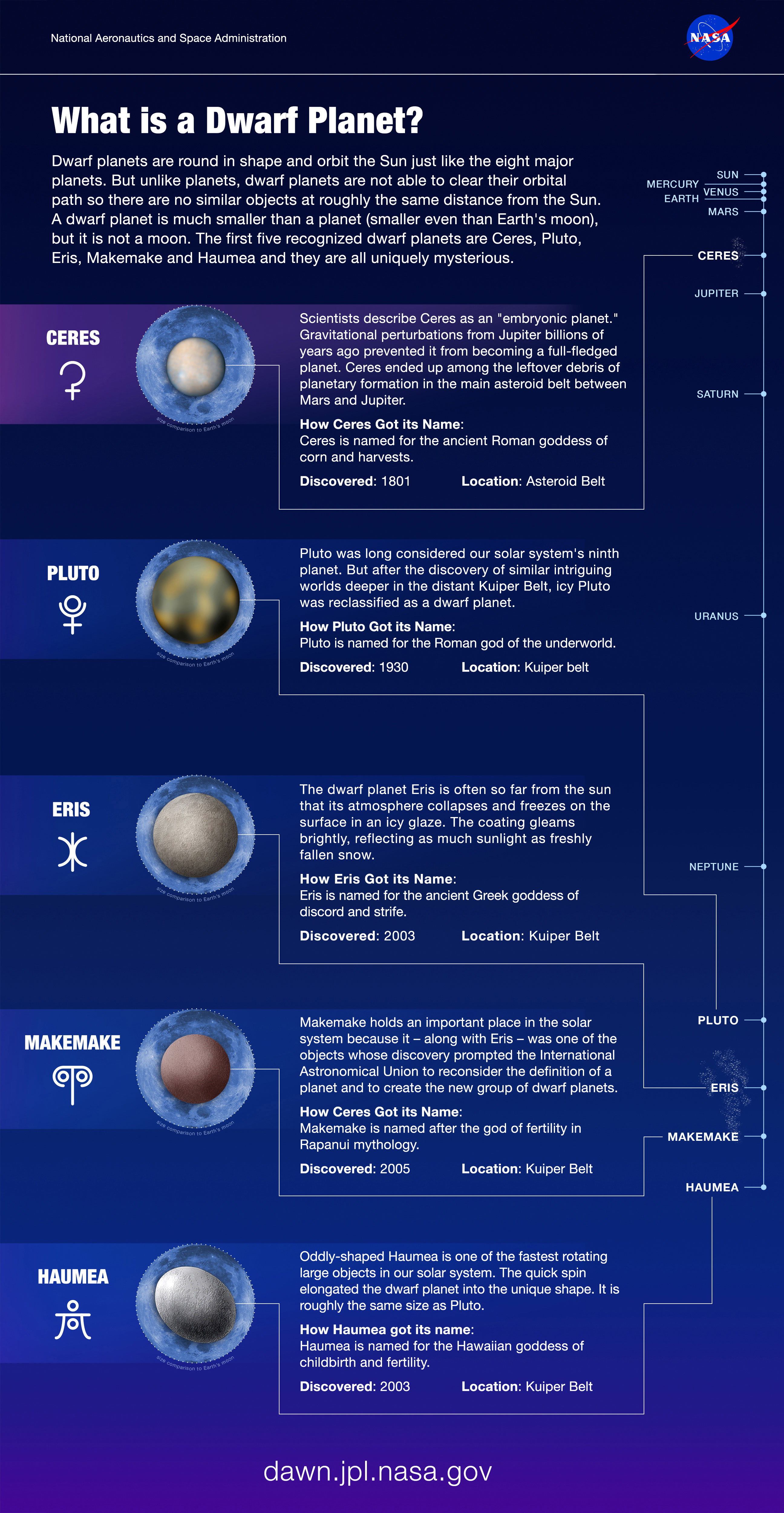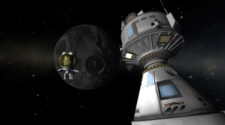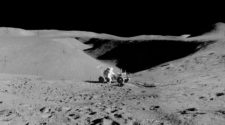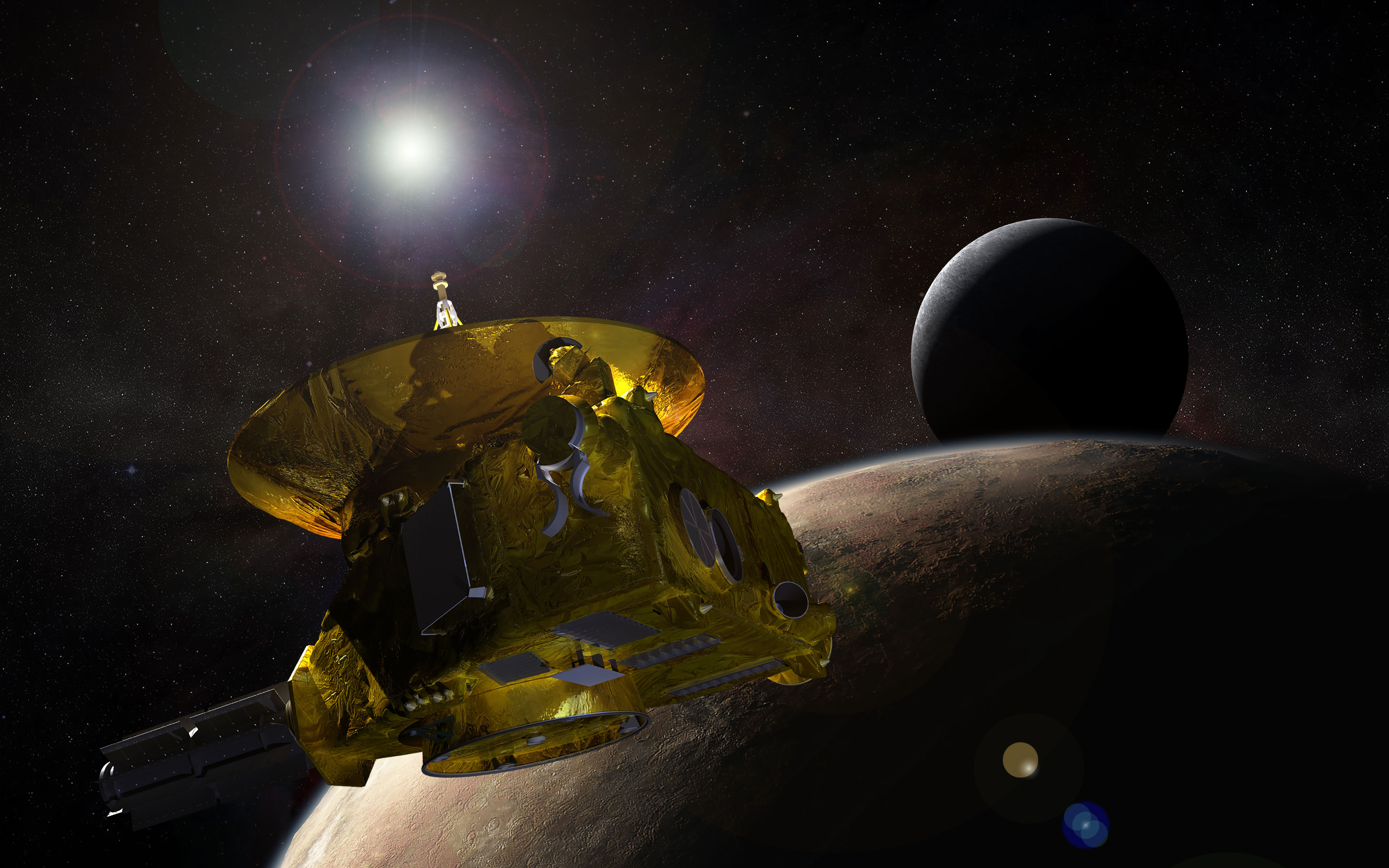
Nine years ago, in 2006, NASA launched the New Horizons spacecraft to the outer reaches of the Solar System in order to study the Pluto system.
New Horizons is the fastest spacecraft ever launched, and has traveled more than three billion miles to reach its primary target: Pluto. The flyby of the Pluto system on July 14 will complete our initial exploration of the Solar System while opening the door to an entirely new realm of mysterious small planets and planetary building blocks in the Kuiper Belt.
Reaching the Kuiper Belt, or the “third” zone of our Solar System — a region beyond the inner, rocky planets and outer gas giants — has been a priority for years, as it holds building blocks of our Solar System that have been stored in a deep freeze for billions of years.
Pluto, the largest known body in the Kuiper Belt, offers an extensive nitrogen atmosphere, complex seasons, strangely distinct surface markings, an ice-rock interior that may harbor an ocean, five moons. And that’s just what we know.
The flyby will also cap a five-decade-long era of solar system reconnaissance that began with Venus and Mars in the early 1960s, continuing through first looks of Mercury, Jupiter and Saturn in the 1970s and Uranus and Neptune in the 1980s. The July 14 flyby of Pluto will occur 50 years to the day after humans first explored Mars with NASA’s Mariner 4 on July 14, 1965.
The Pluto system is unique in that it contains the only binary planet system in our Solar System. Pluto and its largest moon Charon are what scientists refer to as a double-dwarf system. Pluto is currently classified as a dwarf planet; while Charon is technically labeled a moon, both bodies orbit the same point in space—a point that isn’t within the circumference of either body.
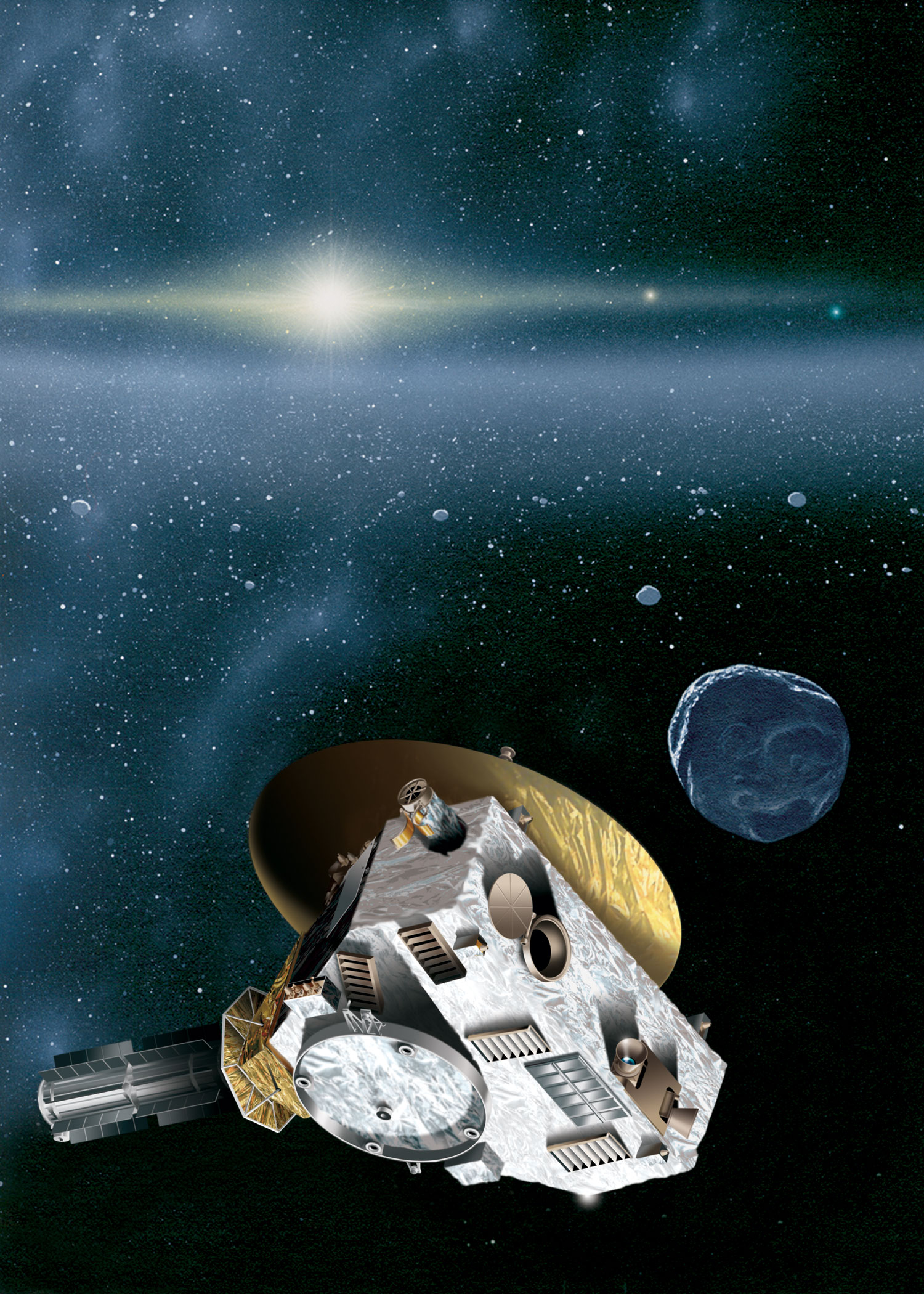
Credit: JHUAPL/SwRI
Just like the Earth and the moon, Pluto and Charon are tidally locked in an orbital dance. The two orbit like unbalanced weights on a dumbbell, each pulling on the four smaller moons—Nix, Styx, Hydra, and Kerberos—that orbit the pair.
Using the Hubble Space Telescope, the researchers conducted a comprehensive analysis of the system and concluded that the two largest moons, Nix and Hydra, wobble chaotically as they orbit. Styx and Kerberos are expected to behave in the same manner, although further observations are needed to confirm this prediction. We can tell that the wobble is intensified by the fact that the four moons are not spherical in shape; they’re elongated, much like a football.
Pluto was discovered in 1930 by astronomer Clyde Tombaugh at the Lowell Observatory in Flagstaff, AZ. Shortly after the New Horizons mission was launched in 2006—and after the discovery of another Kuiper Belt Object (Eris) —astronomers voted to demote Pluto from its planetary status. In honor of Tombaugh, a small New Horizons carries some of his ashes on board as he passed away before the mission could get off the ground.
Astronomers want to know how a system like Pluto and its moons could form. The prevailing theory: Pluto collided with another large body in the distant past, and much of the debris from this impact went into orbit around Pluto, eventually coalescing to form Charon. Scientists believe that a similar collision led to the creation of Earth’s moon, so the study of Pluto and Charon could help scientists decipher the history of our own planet.
Scientists want to figure out why Pluto and Charon look so different. From Earth, the Hubble Space Telescope and New Horizons, we have seen that Pluto has a reflective surface with distinct markings indicative of polar caps. Charon’s surface is far less reflective, with indistinct markings. Pluto has an atmosphere, and Charon does not. Is the sharp contrast between these two bodies a result of evolution or is it due to how they formed? New Horizons will hopefully be able to solve this mystery.
Pluto’s density, size and surface composition are strikingly similar to those of Neptune’s largest satellite, Triton — a captured body from the Kuiper Belt. One great surprise of Voyager 2’s exploration of the Neptune system was the discovery of ongoing cryovolcanic activity on Triton. Will Pluto or other KBOs display such activity?
Another fascinating aspect of Pluto is its surprisingly complex atmosphere. Although Pluto’s atmosphere is about 300-600 times less dense than Mars’ — which is, in turn, about 150 times less dense than Earth’s — it offers unique insights into the workings of related planetary atmospheres at Triton and Titan. Whereas the Earth’s atmosphere contains only one gas (water vapor), Mars contains two (water vapor and carbon dioxide), and Pluto’s atmosphere contains three: nitrogen, carbon monoxide and methane. Pluto’s atmosphere has also puffed up over the years instead of dissipating. Scientists hope to determine why.
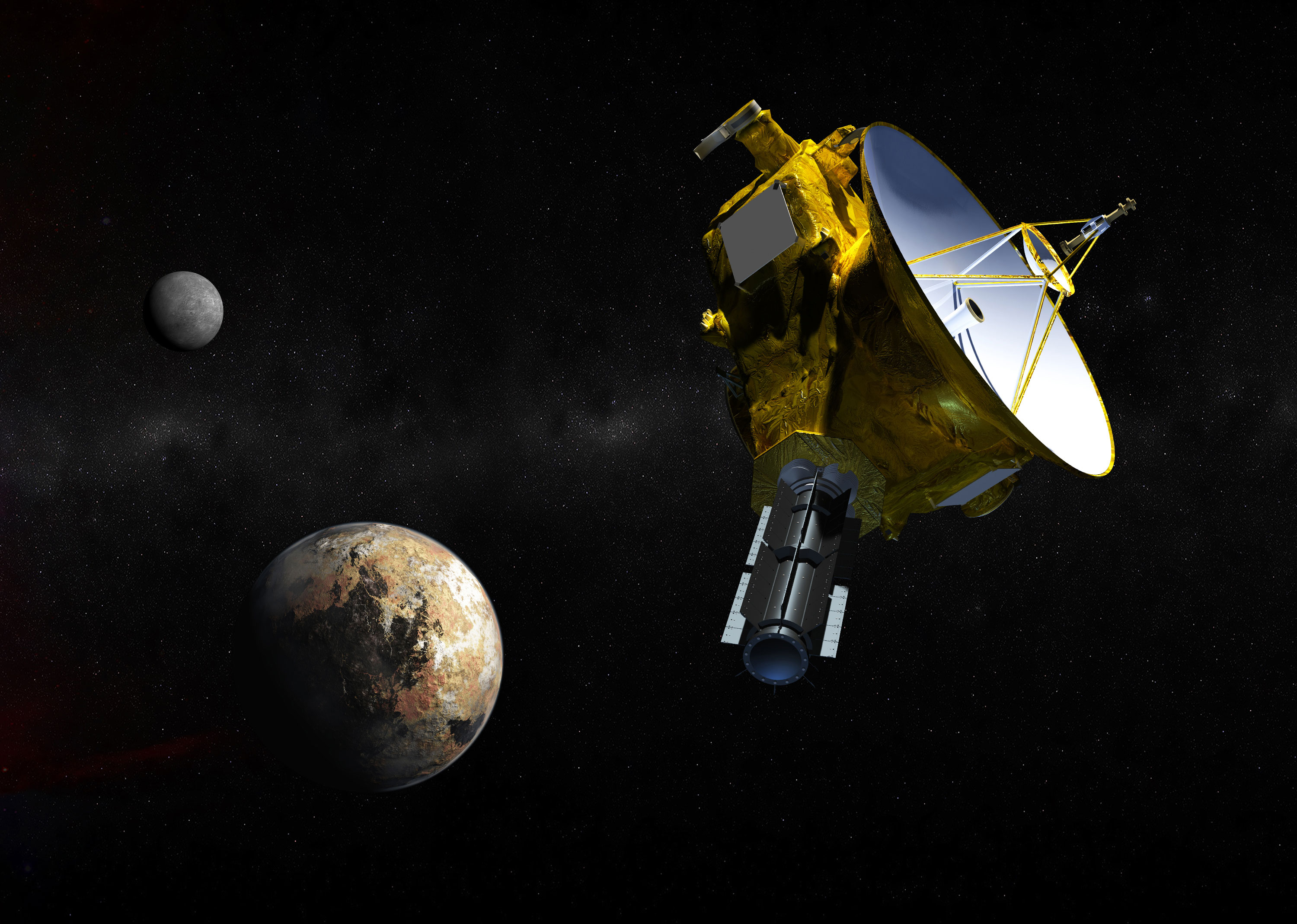
New Horizons is outfitted with a suite of nine different instruments including two cameras—Ralph and LORRI. Until recently, the only images of the dwarf planet were in black and white. With the release of the first color images, and now the first color map, we can see that Mars may not be the only red planet.
Scientists have known for decades that Pluto is reddish brown; however, now we can see it in detail and in living color. Although Mars and Pluto have similar hues, they are due to two very different reasons. Mars gets its red coloring from iron oxide (aka rust). Pluto’s reddish coloration is likely attributed to hydrocarbons (tholins) formed when cosmic rays and ultraviolet light interact with atmospheric and surface methane.
As a result of chemical reactions, the tholins are formed and drop to ground, forming a reddish gunk that gives Pluto its color. Tholins are found in other parts of the Solar System as well, such as Saturn’s largest moon Titan and Neptune’s largest moon Triton—thought to be a twin of Pluto.
New Horizons is expected to give us unprecedented data on the whole Pluto system for many months following the flyby, including data about its surface, its moons and its environment, refining our knowledge of the dwarf planet and its system.
Pluto is not the last stop for New Horizons. In 2014, the Hubble Space Telescope identified three possible KBO’s beyond Pluto for the probe to flyby. If NASA approves and there’s funding, the spacecraft will visit one in 2019.
